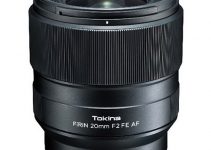Do you remember the vigorous debate a couple of years ago whether the Canon DSLRs were capable of delivering true 1080p videos and how many lines they were actually able to resolve? Despite that the technology has advanced significantly these days with resolutions getting higher and higher as we speak the things haven’t change that much, especially in this regard.
The notion that the entry-level 4K cameras such as the Panasonic GH4 deliver just as good 4K videos as the high-end digital cinema cameras (if not better) still creates some ambiguous controversy in the filmmaking community. Shooting in 4K for web delivery is another frequently discussed question and here is a video where Linus from LinusTechTips shares his insights on the topic.
And, this is the response to the video this time by videographer and director Stronz Vanderploeg who puts the things into a little bit different perspective.
As a rule of thumb, if you are looking for optimal image quality you should always utilise the higher resolution than the one you are going to deliver your production in. The online distribution isn’t an exception to the rule as well. Furthermore, this is even more essential when you are shooting with some entry-level 4K cameras as this workflow ensures that you will get the best possible results when you are downsampling your 4K footage to 1080p.
The other aspect discussed in the above videos concerns the YouTube compression. Obviously, 4K videos are played back not only in higher resolution but in higher bit rate as well once uploaded to YouTube, so it’s always better to deliver your videos in the maximum resolution if you want to get better play back performance, no matter of the quality mode you choose to watch them in.
Plus, when you are dealing with compression and oversampling the resolution of your 4K videos is more likely to produce fewer compression artefacts, thus providing better overall image quality in 1080p.
You also have the benefit of cropping and re-adjusting framing to some extent in post-production when you are delivering in 1080p resolution downsampled from the 4K master footage. Upsampling of 1080p video to 4K for final delivery also makes sense on certain occasions, but only if you use a camera that shoots true 1080p images just like the Arri Amira is capable of delivering upsampled UHD footage from it’s native 3.4K sensor.
So the answer to the above question is “Yes”, shooting in 4K and getting this extra resolution is absolutely worth it, especially when you have the post-production resources to handle this type of media. File size is another important consideration you shouldn’t underestimate.
As it was discussed numerous times in the past, not every 1080p video is created equal, just as not every 4K camera provides the same image quality. Whether you are shooting on a camera such as the Red Epic or the Panasonic GH4 you simply have to know well the strengths and limitations of your camera system so that you can produce the best final product.
[via: PetaPixel, source: LinusTechTips, Stronz Vanderploeg]
Disclaimer: As an Amazon Associate partner and participant in B&H and Adorama Affiliate programmes, we earn a small comission from each purchase made through the affiliate links listed above at no additional cost to you.





Hi, thanks for all the good work on your 4K shooters website/vlog. Some feedback: I am not sure I fully agree with your line “The notion that the entry-level 4K cameras such as the Panasonic GH4 deliver just as good 4K videos as the high-end…{etc} “. In terms of level of detail and amount of pixels, you are right, but the dynamic range of camera’s like the Arri Alexa and Red Dragon (14+ stops) is still a significantly better than the GH4 which maxes out at 10 stops for video. The effect of this is very visible to anyone trying to film outside on a bright day (resulting in blown out skies, or very dark shadowy area’s etc.). Arri and Red are simply superior in dynamic range. Well, they better be, as they cost 30x more!
VLOG for GH4 may improve on that. I own a GH4 and use it for 4K video all the time. In terms of bang for the buck (1300 USD) it is superb. New bridge camera’s like the Panasonic FZ1000 and new Sony RC10 mark II are very close in terms of 4K. The Sony RC10 has SLOG built-in btw. So I guess improvements in dynamic range is where the game is at now. Better codecs (H265) are on the way as well…
I totally agree. That’s why I’ve written “….still creates some ambiguous controversy in the filmmaking community.”